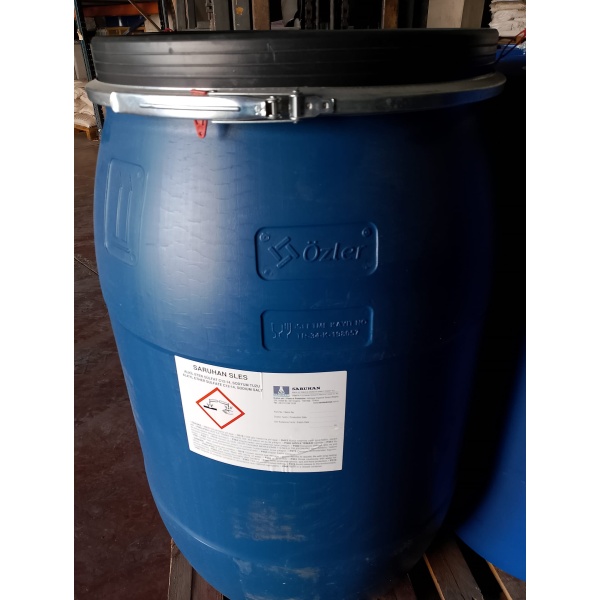SLES 70 DOMESTIC PRODUCT
2.00 $
CAS No: 3088-31-1
EINECS No: 221-416-0
Humidity and voatiles%: 24-26
Specific Gravity (25): 1,03 g / cc
Boiling point: 760mm AT 100 C
Freezing point: 5 C
Solubility in water (20): soluble
Flash point: (> 93.9 C)> 20I F
Chemical formula: CH3 (CH2) 10CH2 (OCH2CH2) nOSO3Na
Package: 210/220 kg plastic drum, 80 drums / 20 'FCL
Appearance: White or light yellow gel
Active substance: 70 ± 2%
Unsulphated Article%, (see% 100 active substance):? 1.5
Sodium Sulphate%, (see 100% active substance):? 1.0
Color Klett: 5% left aq (5%)
pH Value: 7.0-9.5
General Information
Its chemical name is sodium laury ether, the chemical name of which is CH3 (CH2) 10CH2 (OCH2CH2) nOSO3Na. It has excellent decontamination, emulsion, dispersion, wetting, solubilizing properties, known as Teksapon. wide compatibility, suitable for hard water resistant and high biological ability is expanding its use. The word in the dialect of laury is famous and shows the importance of this matter from a different point of view.
Production and Reactions
SLES is prepared by dodecyl alcohol ethoxylation for commercial products. Sodium laury ether sulphate (SLES), which is used as the active ingredient in liquid soap, is produced by reaction with SO3 gas in the sulfonation reactor (such as LABSA). 28% SLES is produced as a result of the reaction.
Usage areas
Cosmetic
The most widely used area in this sector is used as an active ingredient in soap production. As the product has low viscosity and active ratio, it is generally used in shampoo production but is not preferred.
Detergent
It is used as an additive in liquid dishwashing materials. It is also used as an alternative because it increases foaming activity in products such as bath foam, washing powder, hand washing soaps.
Textile
It is used in degreasing processes against oils which may occur in printing and dyeing products.
Skin
It is used in this sector to provide hygiene as in the textile sector.


